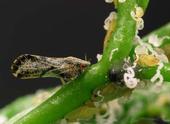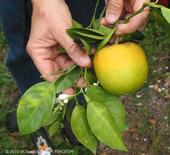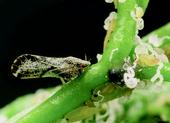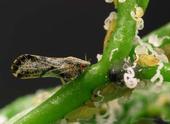
The following press release was distributed by Stanislaus County's Agricultural Commissioner's Office on Thursday, Oct. 29, 2015.
Modesto, October 29, 2015 – The Stanislaus County Agricultural Commissioner, in cooperation with the California Department of Food and Agriculture are beginning an extensive survey and treatment program in response to the detection of two Asian citrus psyllids on a residential property within the City of Turlock in Stanislaus County.
Two Asian citrus psyllids were confirmed on Monday, October 26, 2015. To establish the extent of the infestation, an increased number of yellow sticky panel traps...

Sacramento, July 10, 2015 - The California Department of Food and Agriculture (CDFA) and the United States Department of Agriculture (USDA) have confirmed detection of the citrus disease known as huanglongbing (HLB), or citrus greening. The disease was detected in plant material taken from a kumquat tree in a residential neighborhood in the San Gabriel area of Los Angeles County.
This is the second time HLB has been detected in California. The first detection occurred in 2012 in a residential citrus tree in Hacienda Heights, about 15 miles from San Gabriel.
HLB is a bacterial disease that attacks the vascular system of plants. It does not pose a threat to humans or animals. The Asian citrus psyllid can...
- Author: Elizabeth E Grafton-Cardwell
- Author: Cheryl A. Wilen
- Author: Matthew Daugherty

[From the April 2015 issue of the UC IPM Retail Newsletter]
In June 2013, we wrote about the Asian citrus psyllid (ACP) in UC IPM's Retail Nursery and Garden Center News. At that time, ACP was mostly found in parts of Southern California. It has since been detected in multiple locations in the Central Valley and has been detected in the San Francisco Bay Area. Thus, the psyllid is established near, or threatening much of, California's commercial, nursery, and residential...
- Author: Elizabeth E Grafton-Cardwell
- Author: Cheryl A. Wilen

[From the December 2014 issue of the UC IPM Green Bulletin]
In August 2012, we wrote about the Asian citrus psyllid (ACP) in UC IPM's Green Bulletin newsletter. At that time, ACP was found only in San Diego, Imperial, Riverside, San Bernardino, Los Angeles, and Orange counties. It has since been detected in Ventura, Santa Barbara, San Luis Obispo, Fresno, Kern, and Tulare counties, and in the last three months has been found in San Joaquin and Santa Clara counties (Figure...
![Brownish adult, yellow nymphs, and white wax of Asian citrus psyllids, Diaphorina citri Kuwayama. [Photo by Michael E. Rogers, University of Florida]](https://ucanr.edu/blogs/UCIPMurbanpests/blogfiles/25390small.jpg)
Every year, California receives, on average, six new exotic invasive pests of concern; that's about one new pest every 60 days. These may be plants, insects or other arthropods, mollusks, plant pathogens such as fungi and bacteria, vertebrates, or any other organism not native to our state and with the capacity to negatively impact agriculture, urban environments and/or natural ecosystems. These invasive pests enter California on plant material and other biological substrates, as hitchhikers on trade goods and in ship ballast water, and sometimes even because of smuggling operations. Without the natural enemies that kept them in check in their native lands, they are free to reproduce and wreak havoc. Such pest invasions may then lead to...


